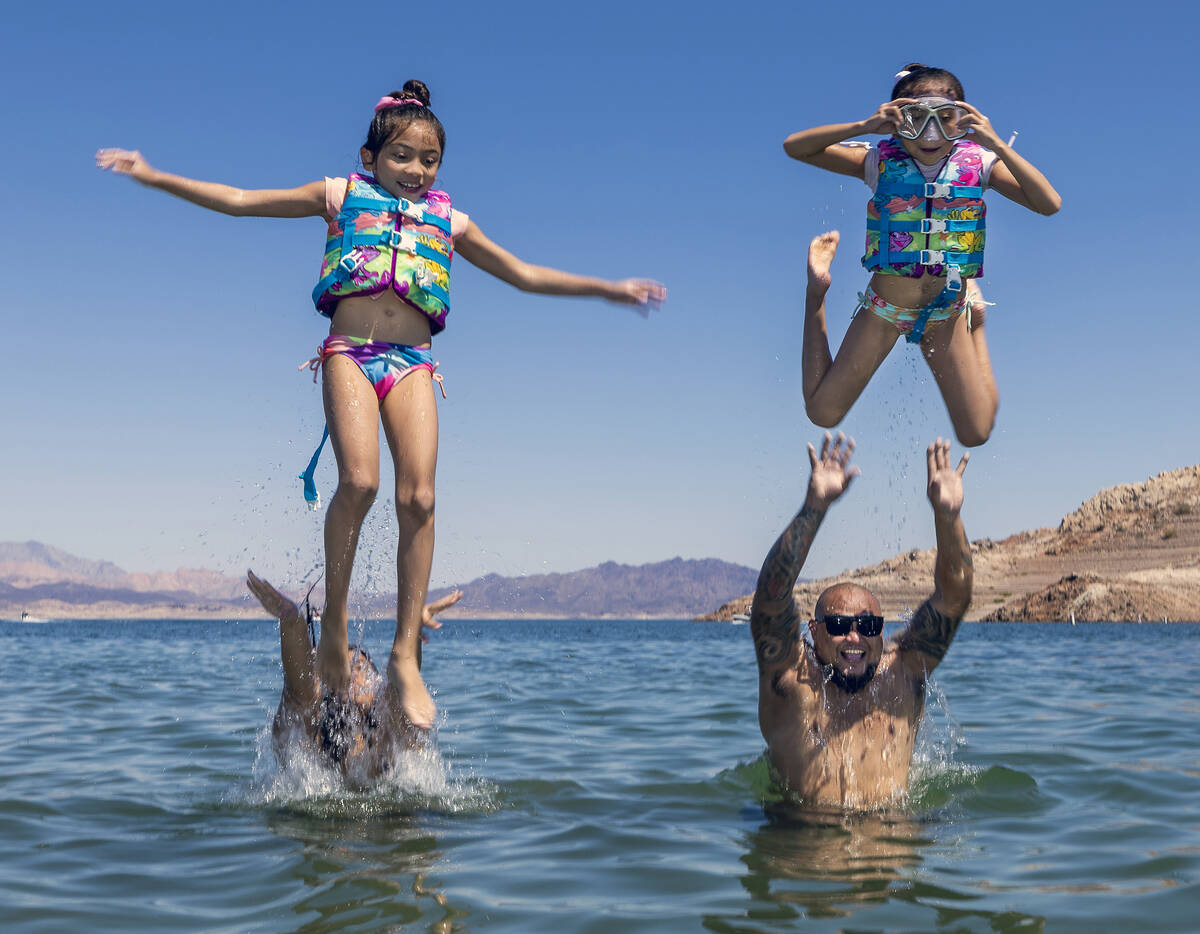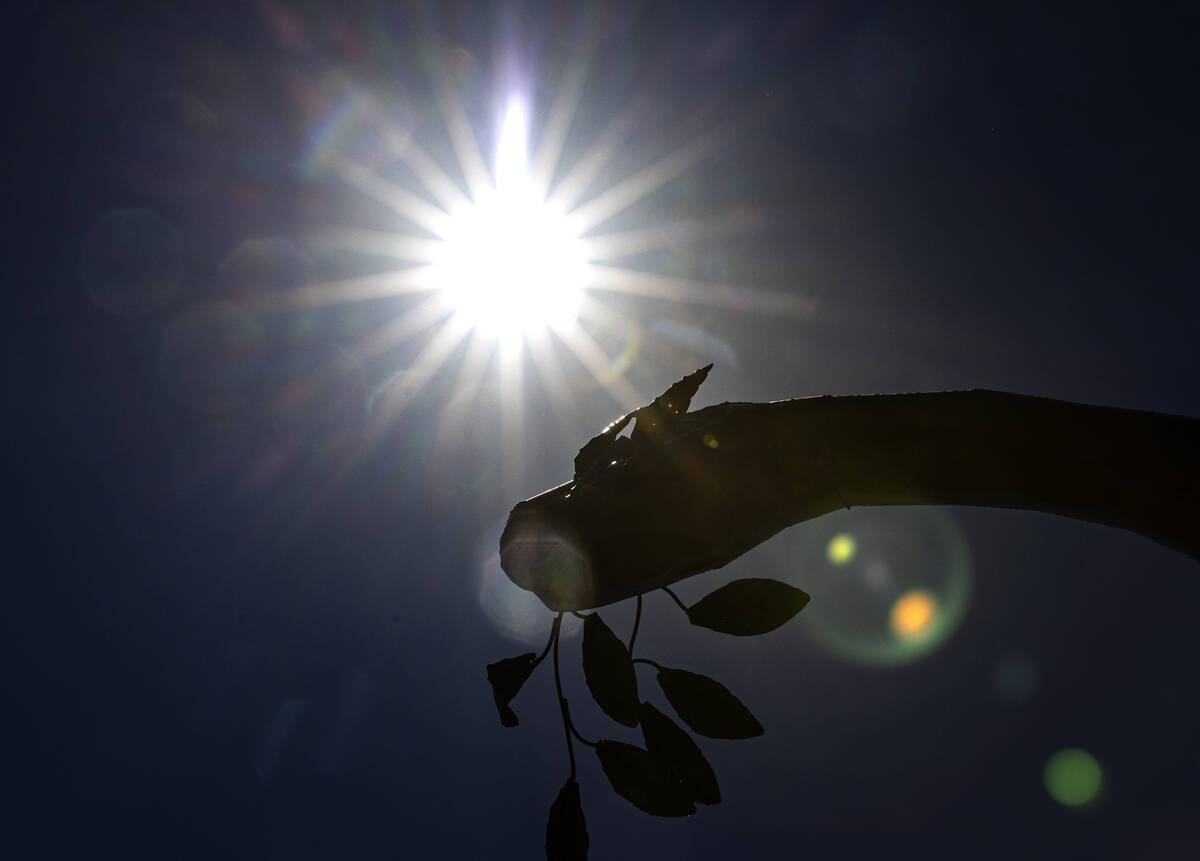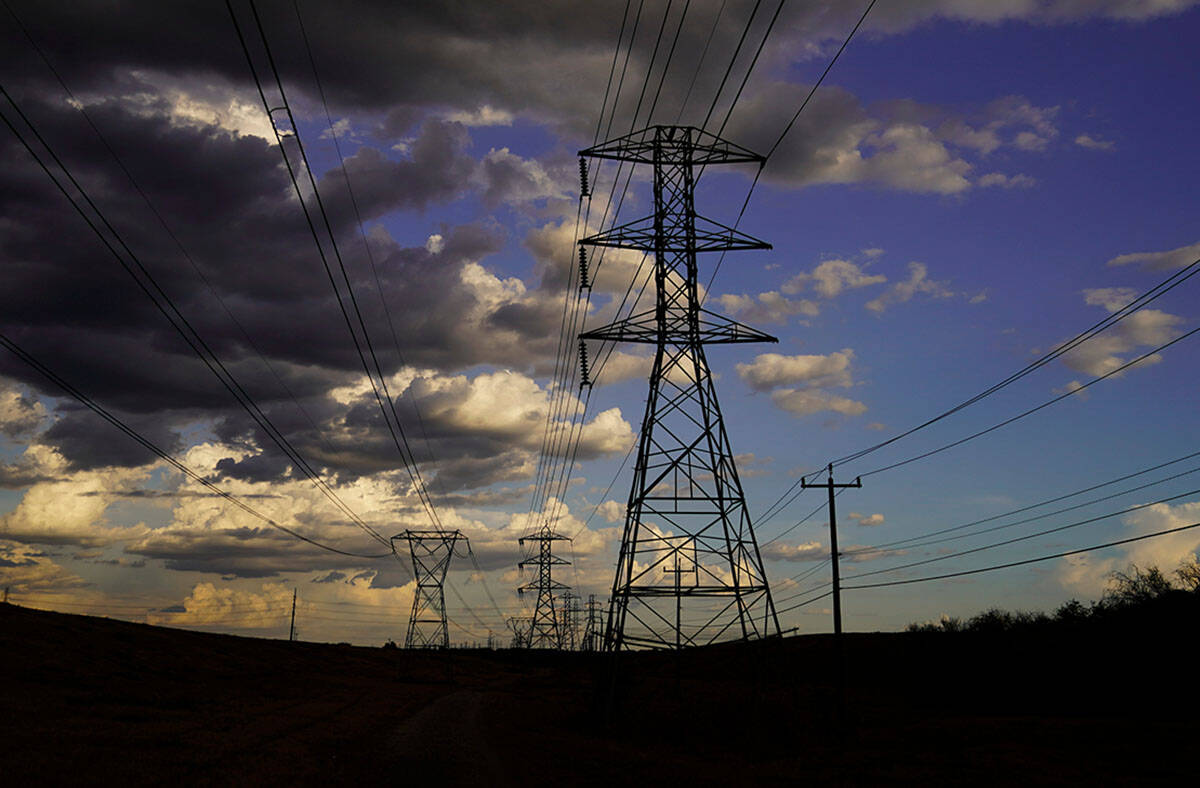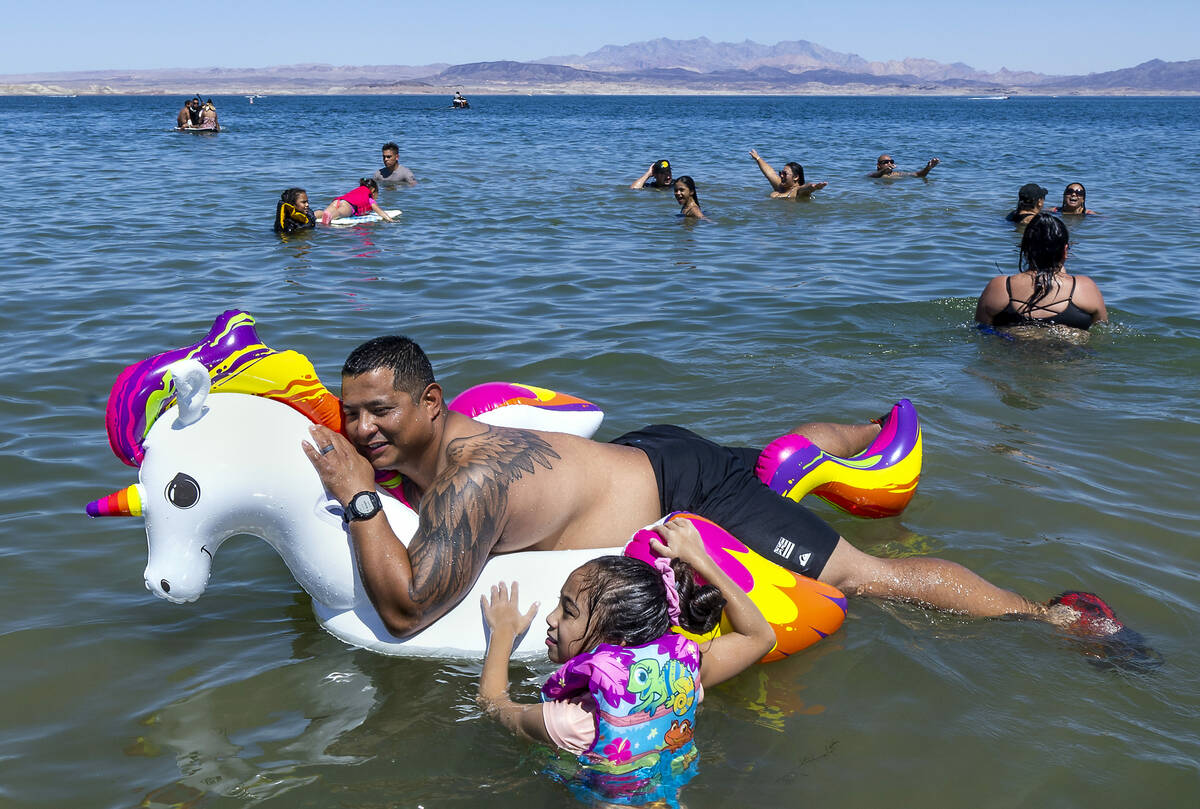Heat wave stretches on
As a scorching heat wave continues to embroil Las Vegas and the Southwest, Tuesday’s high temperature in Sin City peaked at 110 degrees.
It was the fifth hottest day of 2022 in Las Vegas, said Brian Planz, a meteorologist with the Las Vegas office of the National Weather Service.
The next few days will also be dangerously hot in the Las Vegas Valley, according to National Weather Service forecasters.
Temperatures are expected to soar up to 12 degrees above normal through Thursday, stretching the area’s excessive heat warning to 10 days.
But then, thanks to Hurricane Kay in the Pacific, the heat wave is expected to break at the weekend, with rainfall in the cards and potential flash flooding.
But as always, with hurricane forecasting four to five days out, the forecast isn’t incredibly certain yet.
Breaking the heat
Still, the expected moisture should break the heat.
“This will bring down temperatures across the board for Friday and likely be the end of our warning, which will have been in effect for over 10 days by Thursday,” stated a forecast discussion posted Tuesday by the weather service.
But until then, the heat will be hazardous. Forecasters warn of the higher likelihood for heat-related illnesses, particularly for those who work outside. They are calling for residents of the Las Vegas area to stay hydrated by drinking lots of fluids, to stay in air-conditioned rooms, to stay out of the sun and check up on relatives and neighbors.
“Young children and pets should never be left unattended in vehicles under any circumstances,” the excessive heat warning says.
Cooling shelters are also open in various locations across Clark County.
NV Energy is also asking customers to cut back on power usage.
“Help reduce strain on the western U.S. power grid during this heat wave Tuesday, Sept. 6 through Thursday, Sept. 8 by conserving energy, especially between 5 p.m. and 8 p.m.”
A text message sent to customers from NV Energy on Tuesday asks people to conserve by “adjusting the thermostat to 78 degrees or higher, avoid using large electrical appliances, turning off pool pumps and not charging electric vehicles.”
The Mohave Electric Cooperative is also asking its users to conserve energy. After a storm blew through, causing a citywide blackout in Bullhead City on Sunday, emergency cooling shelters have been opened as crews continue working to restore full power to the area.
Setting records
Forecasters say “numerous locations have the potential to tie or break record high and warm low temperatures through Thursday of this week.”
The hottest Sept. 6 on record for Las Vegas was in 2020, when the city reached 114 degrees. The temperature for this Tuesday, Sept. 6, is expected to reach 110.
The hottest Sept. 7 for Las Vegas was set the next year, in 2021, when the thermometer reached 108 degrees. Wednesday’s temperature is forecast to reach 107.
Death Valley’s record for Sept. 6 is 123, set in 2020, but that temperature was predicted to reach a record 124 Tuesday. For Sept. 7, that record was 122 degrees, set in 2021. The temperature on Wednesday is expected to reach 121 degrees.
The National Weather Service on Tuesday tweeted a review of August, noting that it was the first August since 2014 in which the high temperature didn’t reach 110 degrees. The highest temperature, 109 degrees, was recorded on Aug. 31. The average temperature for the month was 91.1 degrees.
It was also the 21st wettest August on record for Las Vegas. The rainfall total, which was measured at 0.61 inches, was 0.29 inches above normal and marked the highest August rainfall total since 2015.
Key safety precautions
— Drink plenty of fluids, stay in an air-conditioned room, stay out of the sun, and check up on relatives and neighbors.
— Young children and pets should never be left unattended in vehicles.
— Take extra precautions if you work or spend time outside. When possible reschedule strenuous activities to early morning or evening.
— Know the signs and symptoms of heat exhaustion and heat stroke. Wear lightweight and loose-fitting clothing when possible. Nausea, dizziness, headaches and muscle cramps are signs of heat exhaustion. With continued exposure to high heat and sunlight, the body could begin to experience multi-organ failure.
— Avoid outdoor activities in the hottest part of the day.
— To reduce risk during outdoor work, the Occupational Safety and Health Administration recommends scheduling frequent rest breaks in shaded or air-conditioned environments. Anyone overcome by heat should be moved to a cool and shaded location. Nevada workers at risk for heat illness have new protections.
— Heat stroke is an emergency. Call 911.
Contact Brett Clarkson at bclarkson@reviewjournal.com or 561-324-6421. Follow @BrettClarkson_ on Twitter. Contact Marvin Clemons at mclemons@reviewjournal.com or 702-863-4285. Follow @Marv_in_Vegas on Twitter.




















